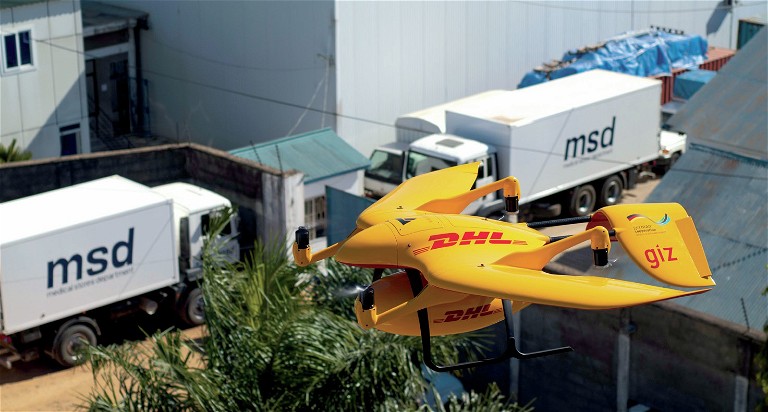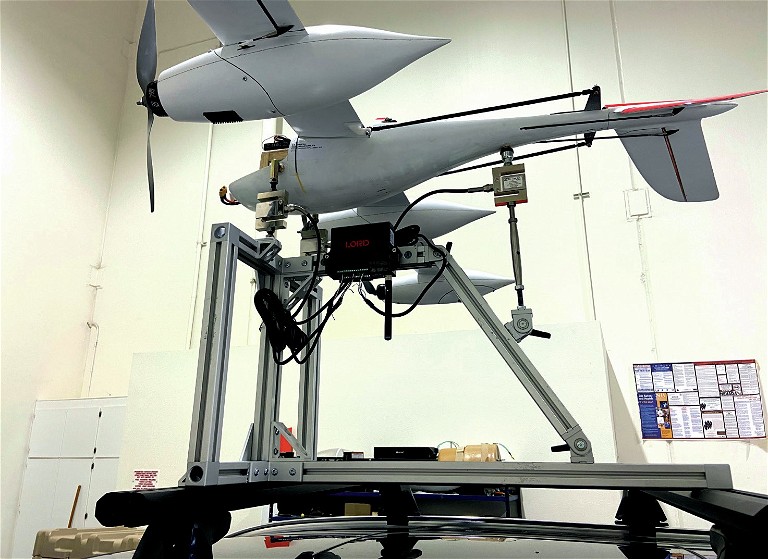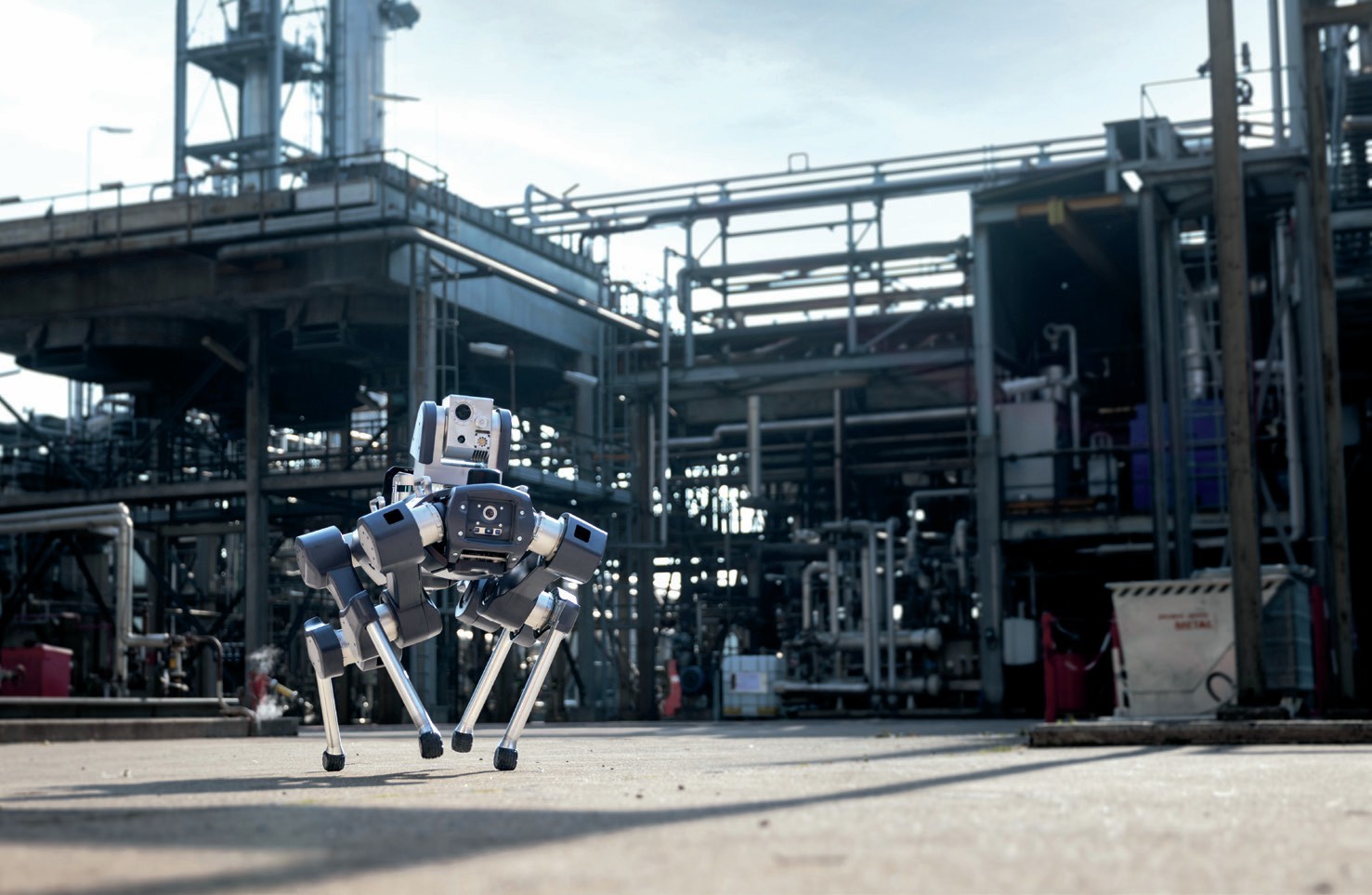Article with Integrated Ads
50 issues of Uncrewed Systems Technology Special review
Special review
Our first cover dossier was on the Penguin C, which was a
contemporary of early successful UAVs such as the InsituScanEagle and AAI Aerosonde (Courtesy of UAV Factory, now Edge Autonomy)
Rory Jackson looks at some of the key trends in uncrewed systems covered in our first 50 issues, and points to others that could emerge in the future
In the words of Dr Donough Wilson in our inaugural issue, in November 2014, “There are no rules.” It’s a stance echoed by our editorial director Ian Bamsey to describe the scope for fresh ideas and uninhibited engineering across the world of uncrewed systems.
These two early cases showcased two quite different approaches to the problem of combining fixed-wing flight with a VTOL and hovering capability. In the German UAV, a quad-tiltrotor mechanism was developed in which each tiltrotor used a servo actuator to move its motor/prop-rotor pod by 90o.
Alti’s Transition on the other hand uses four fixed, vertically oriented rotors installed on twin booms (which run backwards into an inverted vee-tail) combined with a rear-mounted pusher prop. That has become one of the most widely adopted configurations among UAV manufacturers.

VTOL-transitioning has grown from being a rare niche in tiltrotors such as the Wingcopter 178 (Courtesy of Wingcopter)…

…to being widespread among uncrewed aircraft designs, sparking unique creations such as the Transwing UAVs from Pterodynamics (courtesy of Pterodynamics)
Both companies are still operating. Alti UAS has since launched the Reach, a larger variation on the Transition with double the wingspan (6 m rather than 3) and an upscaled powertrain, making it capable of more than 10 hours of endurance and 150 km of range compared to the Transition’s 8 hours and 50 km.
In more recent times, Pterodynamics has gone further than exploring history’s forgotten aircraft designs, by inventing an entirely new one instead. Its Transwing series of UAVs were built with a unique transverse folding wing that made transitioning mechanically simple (with a single linear actuator responsible for the folding) and computationally simple, with effectively a sliding scale between the flight logic of a hovering UAV and that of a fixed-wing UAV.
This aircraft has also been tapped for use by naval vessels, particularly in ship-to-ship or ship-to-shore logistics, and such is the importance of lifting heavy loads in this application that since our feature on Pterodynamics (issue 41, December 2021/January 2022) the company has announced plans for two larger variations of its flagship, the allelectric 38 kg MTOW X-P4.
(Quarter Ads)
The variants are the upcoming hybridelectric X-P5, which will weigh 150 kg when fully loaded and carry 22.67 kg payloads, and the X-P6, which will be powered by a turbo-generator, have a 600 kg MTOW, and lift up to 100 kg of payload per flight. It will also be the fastest aircraft the company builds, with an estimated 120 knots compared to the 100 knots typical of the X-P4 and expected of the X-P5, as well as having an 850 nautical mile range when fully loaded.
All of that is not to say VTOL-transitioning UAVs are a one-size-fits-all solution. Landing vertically with a set of wings makes them more prone to being blown off-course by gusts than multi-rotors, and the added moving parts – be they tiltrotors or fixed-lift motors – will inevitably look like little more than additional points of failure to riskaverse technicians.

UGVs have become increasingly safe and successful when operating on roads, thanks to great improvements in AI unlocking higher levels of self-driving intelligence (Courtesy of Einride)
Despite the complexity and potential dangers of trusting an autonomous system to deliver goods amid people or road vehicles, a lot of companies are now developing very different solutions for handling freight and throughput, while navigating different kinds of traffic.
The Clevon 1 for instance (issue 47, December 2022/January 2023) is a 470 kg last-mile delivery vehicle being used by DHL and others for transporting loads of 150 kg at a time by road, whereas Kodiak’s Gen4 (issue 48, February/March 2023) is an 18-wheeler capable of moving shipping containers autonomously across America’s highways, and Ottonomy’s Ottobot (issue 49, April/May 2023) is designed to deliver food or groceries through streets or airport terminals (GNSS being unsuitable in both cases).
Part of this success has come from tandem advances in hardware and software for navigation solutions beyond pure reliance on GNSS. By being almost always closer to the ground than UAVs, UGVs must typically travel through urban canyons and hence need more than GNSS to reach their objectives and recovery points without issue.
The availability of visual SLAM has been widened greatly by the proliferation of online libraries and open-source algorithms for training UGVs’ main computers to detect and classify key objects in the context of the environments through which they have to navigate, such as pedestrians, charging points or other vehicles.
(Half Page Vertical Ad)

Autonomy without GNSS has been another major hallmark of the past decade, with UGVs such as the ANYmal able to navigate smoothly whether indoors or outdoors (Courtesy of ANYbotics)
The Ottobot for instance primarily uses 3D Lidar for geometric details on surrounding objects, as well as cameras for the semantic information that is key to context-based identification and specification of those objects. It can therefore localise itself using those specifications in the case of fixed objects, or predict how they might move during certain avoidance paths to be taken if they were moving objects.
In the near future, quadrupedal UGVs are expected to be similarly coupled with arms for autonomously opening doors or manipulating valve wheels. And if the reach of their arms proves to be an issue, a subsequent generation of bipedal UGVs can be expected, as a more distant but probably inevitable direction the industry will head towards, to add to the ability of autonomous systems to take the place of people in dangerous working areas.

Uncrewed systems are increasingly a staging ground for biomimetics, such as Aquaai’s Mazu AUV, which flexes and swims like a fish (Courtesy of Aquaai)
(Half Page Horizontal Ad)
But not only are there more than six or so UAV engine companies – we have since investigated 44 that produce either IC powertrains or hydrogen fuel cells for uncrewed systems – we have also visited six of those twice, unpacking their experiences gained after a 5-6 year stint since our first in-depth coverage.
When looking across all these companies, one can see that the uncrewed engine industry reflects changes in the automotive world. There is a great push for fuel efficiency, as manifested in some major trends in how UAV powertrains have evolved. One is centred on heavy fuel, which is valued for its safety and efficiency by naval and other maritime operators.
But over the past 3 years, our industry has seen a boom in engines that are engineered not just for mere compatibility with heavy fuels but optimised to run on them primarily or even exclusively. Hirth, for instance, welcomed us back for our 36th issue (February/March 2021) to show us its 3507-01M liquid-cooled, direct-injection heavy fuel engine, as well as its 4202, an architectural descendant of the S1218 designed with special features to prevent operational hazards such as heavy fuel ‘puddling’ and knocking.
(Full Page Ad)
The Hirth 4202HF (shown here with one of its early iteration) is an evolution (Courtesy of Hirth)
Fuel efficiency and long life between TBOs were major factors driving Aergility’s choice of Turbotech’s recuperated turboprop engine (Courtesy of Aergility)
Similarly, we revisited Cobra Aero in issue 44 (June/July 2022), 5 years after covering its A33i single-cylinder, spark-ignited gasoline engine, to detail its new triple-inline cylinder A99H – in some ways a successor to the A33i, but again, optimised for using heavy fuels as its primary source of power. The A99H also incorporates some advances made during 2017-22, such as metal additive manufacturing and critical improvements in its ECU programming.
As fuels provide far higher specific energy than batteries, hybrid powertrains are vital to unlocking flight times longer than an hour for small, professional multi-rotors, and upwards of say 4 or 5 hours for small and otherwise all-electric fixed-wing systems.
(Half Page Horizontal Ad)